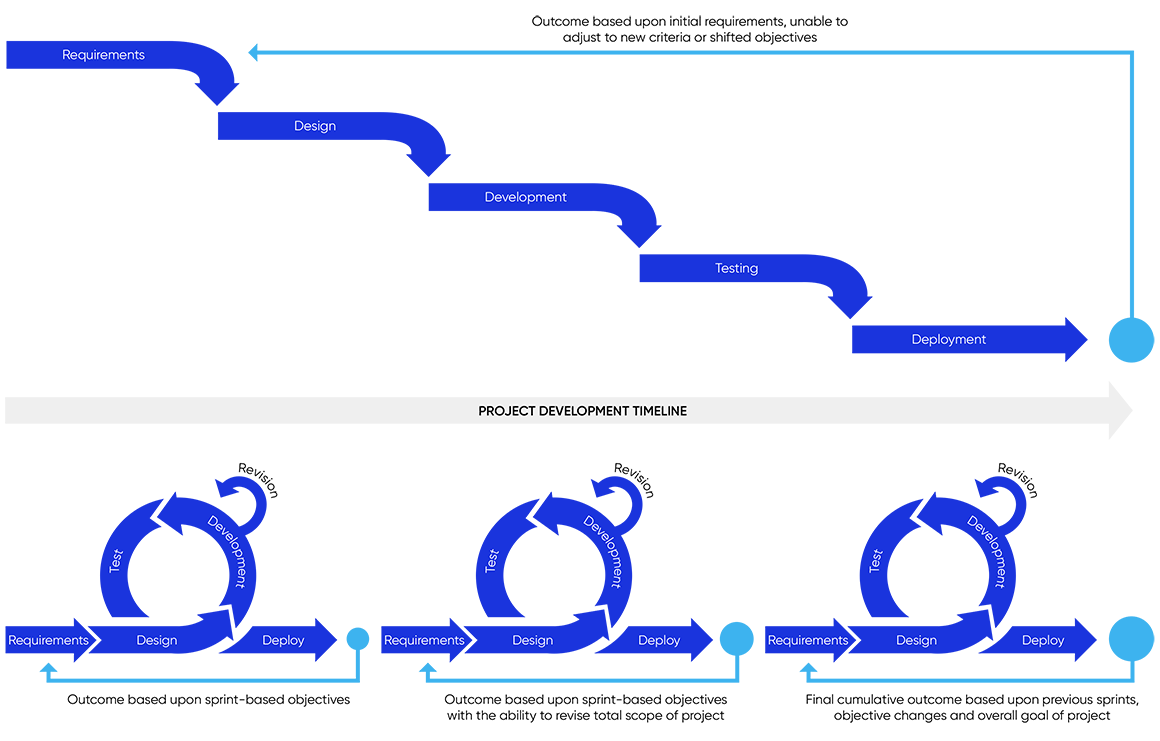To remain competitive, the United States must prioritize the development of emerging technologies over fielding and maintaining legacy systems.
The House Armed Services Committee’s Future of Defense Task Force
In its 2020 report, the task force made it clear that agencies like the Department of Defense must embrace new technology. Much of the DOD’s data infrastructure is dated, running on decades-old, siloed legacy systems, some of which were built using coding languages that are no longer widely supported. These tools were built and combined over the past 25 years and haven’t been updated because the tools work well enough, the users were happy and the cost of switching has been deemed to be prohibitive. Operating in this environment, however, carries its own costs, hindering any possible culture of innovation for one of the most important agencies in the country and requiring an excessive time investment due to lengthy, baked-in procedures and processes.
Federal agencies must embrace concepts like rapid prototyping so they can quickly expand their capabilities without getting bogged down in bureaucracy and long-term contracts that slow the critical process of digital transformation.
Rapid prototyping offers a flexible, low-cost way to quickly explore which technologies make sense for a given project or initiative. It represents the opposite of the traditional slow-moving and expensive R&D process and eliminates many of the drawbacks of the waterfall approach that have plagued technologists for decades.
Waterfall development vs rapid prototyping

The waterfall approach involves laying out an entire project from beginning to end in fine detail, designing something, implementing it and then verifying its efficacy before moving into maintenance mode. This approach does not cope well with the inevitable changes that will be needed, which makes for a lengthy process before a value is realized. Additionally, the waterfall method only allows for one solution to be realistically considered, wasting otherwise priceless in-project learnings.
Conversely, rapid prototyping brings the benefits of an agile methodology, which involves minimizing the planning stage and maximizing prototype development efforts – whether for a physical object, a technology solution or a software implementation. Rapid prototyping stresses quickly planning, designing and collecting feedback, followed by iterating and adapting based on that feedback in order to deliver the optimal product or solution that has been proven to address the problem at hand.
Long timelines and slow progress toward actionable results are par for the course in the federal space, which often requires several multi-year, multi-million-dollar contracts to gain anything from a new effort. The early brainstorming, testing and iteration that are core to rapid prototyping represent a low-cost way to ensure the right solution is chosen and developed before heavy time and financial investment is required.
Utilizing rapid prototyping is a powerful way to quickly explore and validate innovative ideas and gauge the potential impact of those ideas. Seeing a concept in action or being able to interact with it also allows decision makers and end users to predict adoption and usability, allowing for needed cultural shifts. After all, even the perfect solution won’t solve the problem if people don’t use it.
Agencies like the Department of Defense, however, don’t often include rapid prototyping as part of the procurement process. They are used to the status quo, putting out RFPs for a project and selecting a contractor, resulting in expansive timelines and long, costly contracts. Taking the time up front to build a prototype of a solution, or a proof of concept, that provides real results with real data avoids strategic missteps and accommodates changing conditions, resulting in greater efficiency, faster development, immediate ROI – and it will support growth goals. By working through multiple solutions, an organization allows for more comprehensive, innovative solutions that will provide value from the start.
Going from whiteboard to value in 90 days or less
Companies that try to partner with agencies in the federal space often stumble because they don’t understand the constraints that go with the territory, such as classified environments, security clearances and the limited selection of commercial products that are certified for use in federal environments. Going from whiteboard to value in 90 days or less requires industry and technology experts who first work to gain intimate knowledge of organizations’ key goals and the challenges they face. Only then should a partner start developing a potential solution, program, product, feature or method and prove its real-world applicability and feasibility.
Let’s have a conversation about what technology and data problems you’re facing and how Blueprint expertise can help you identify a proven track forward.

